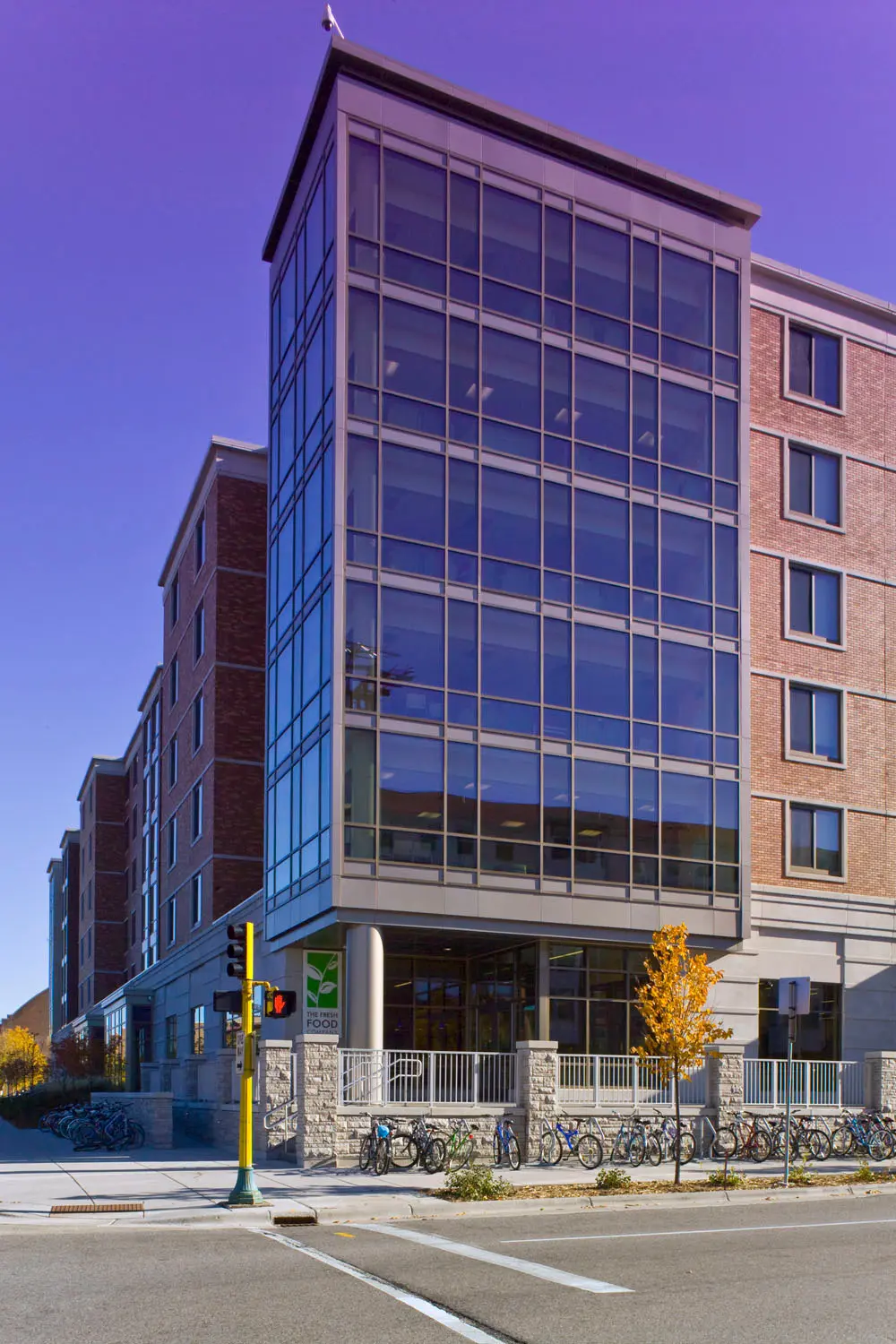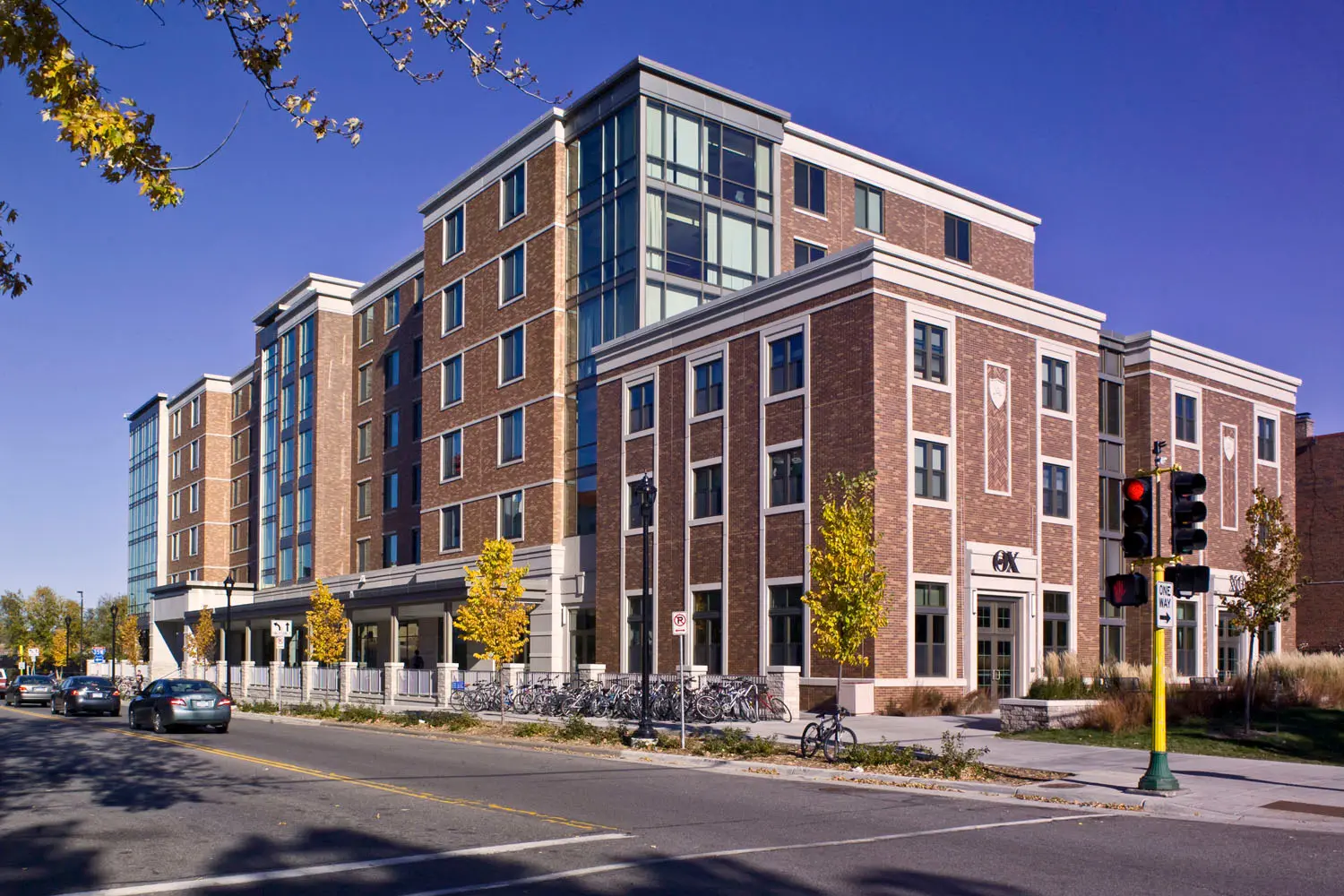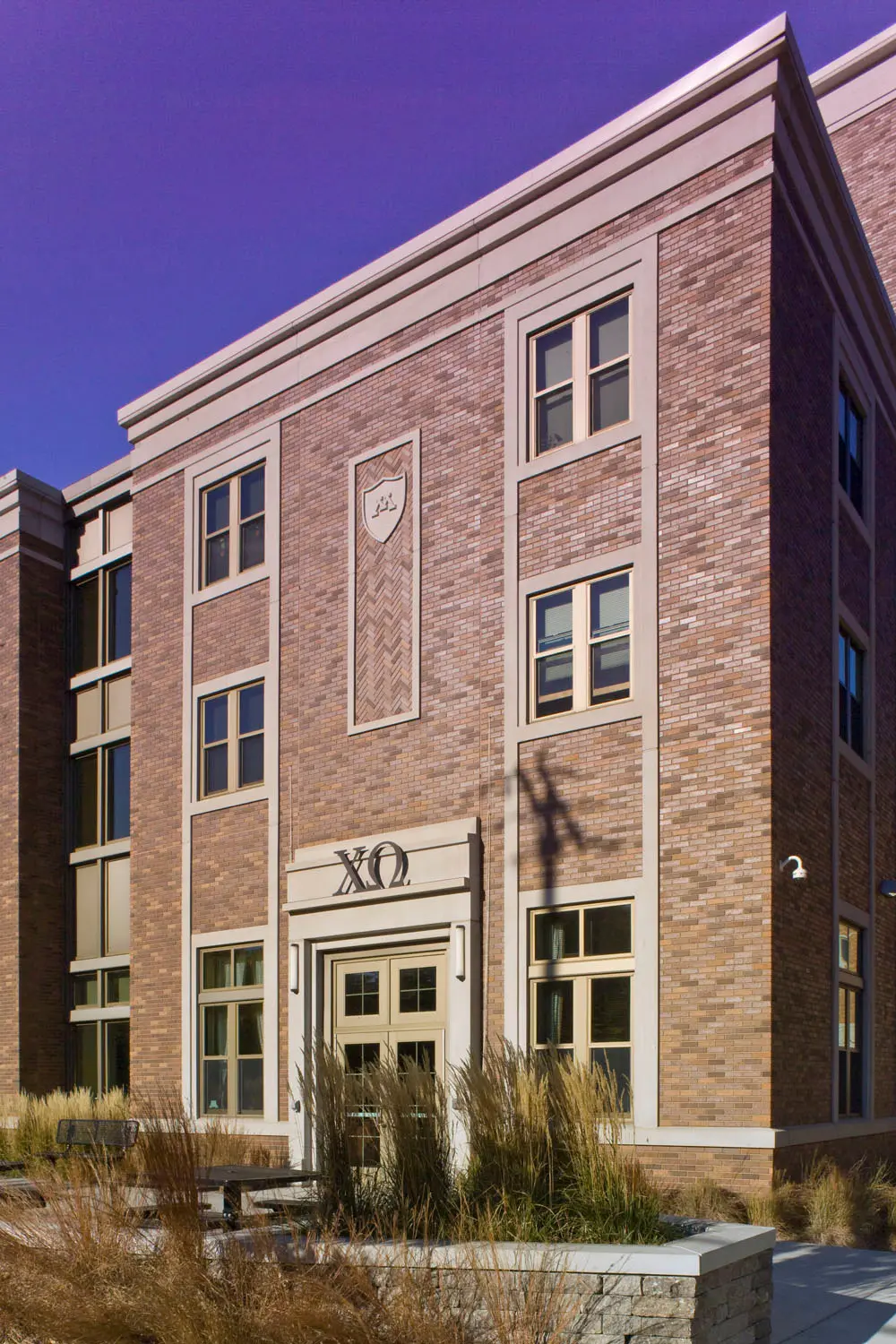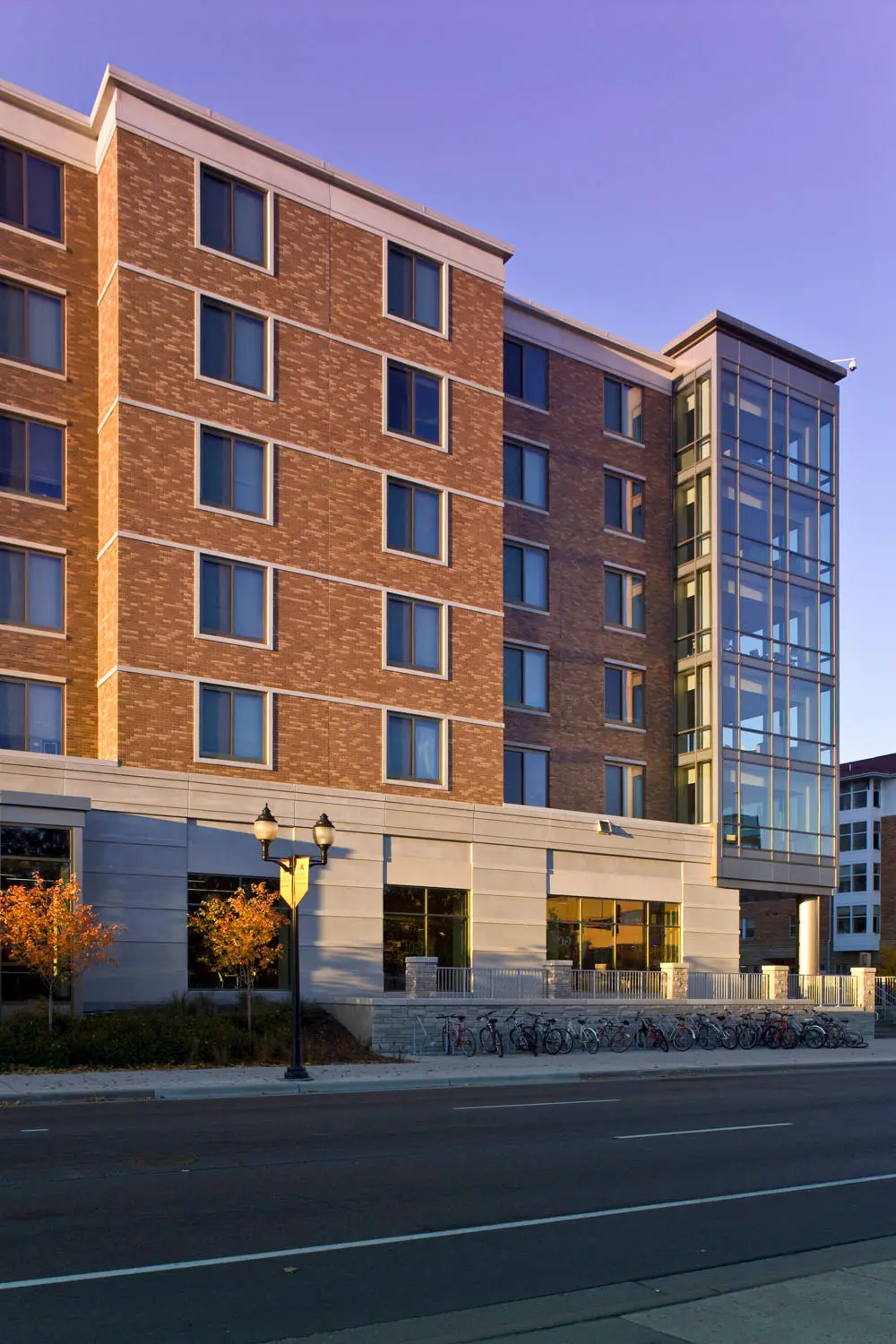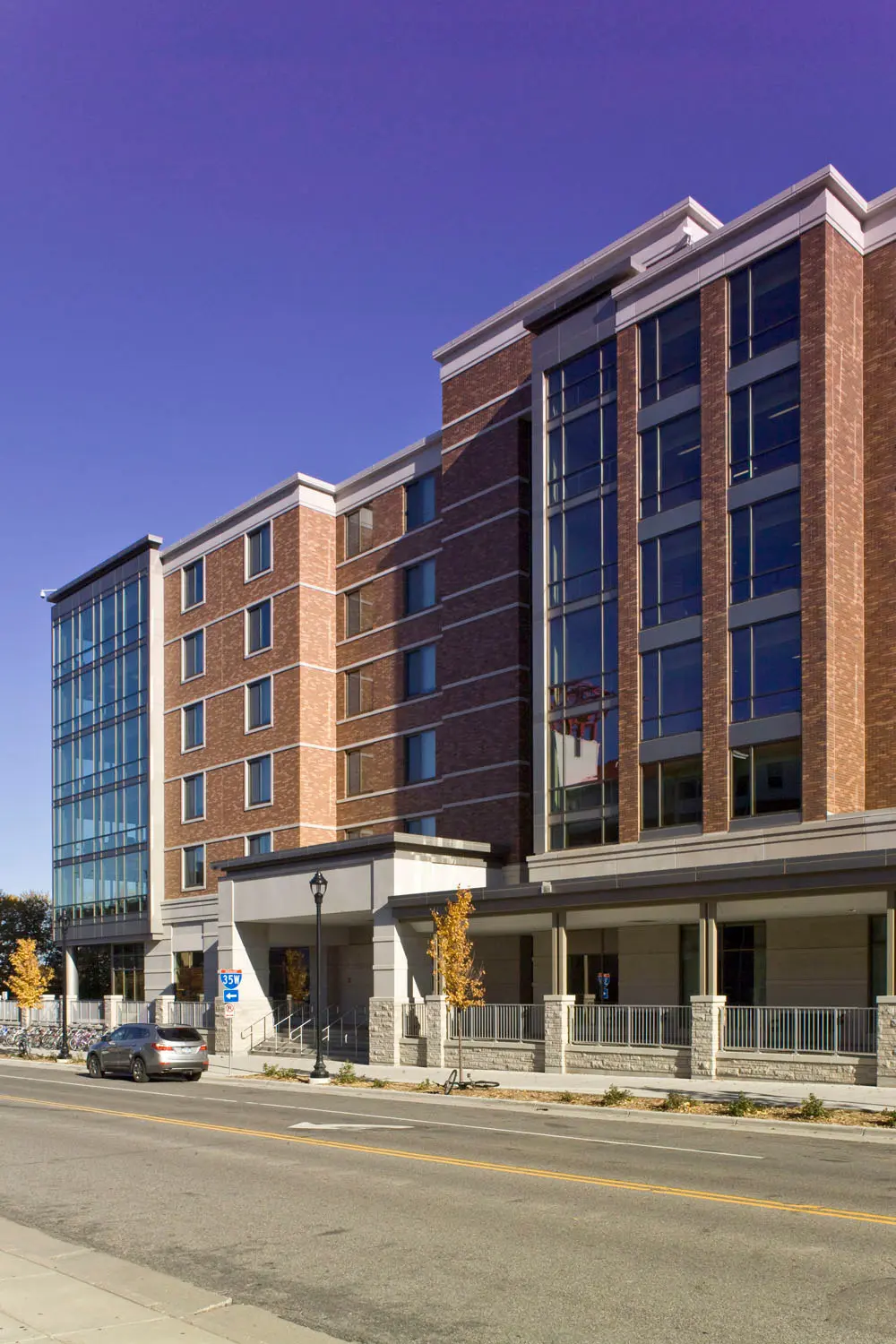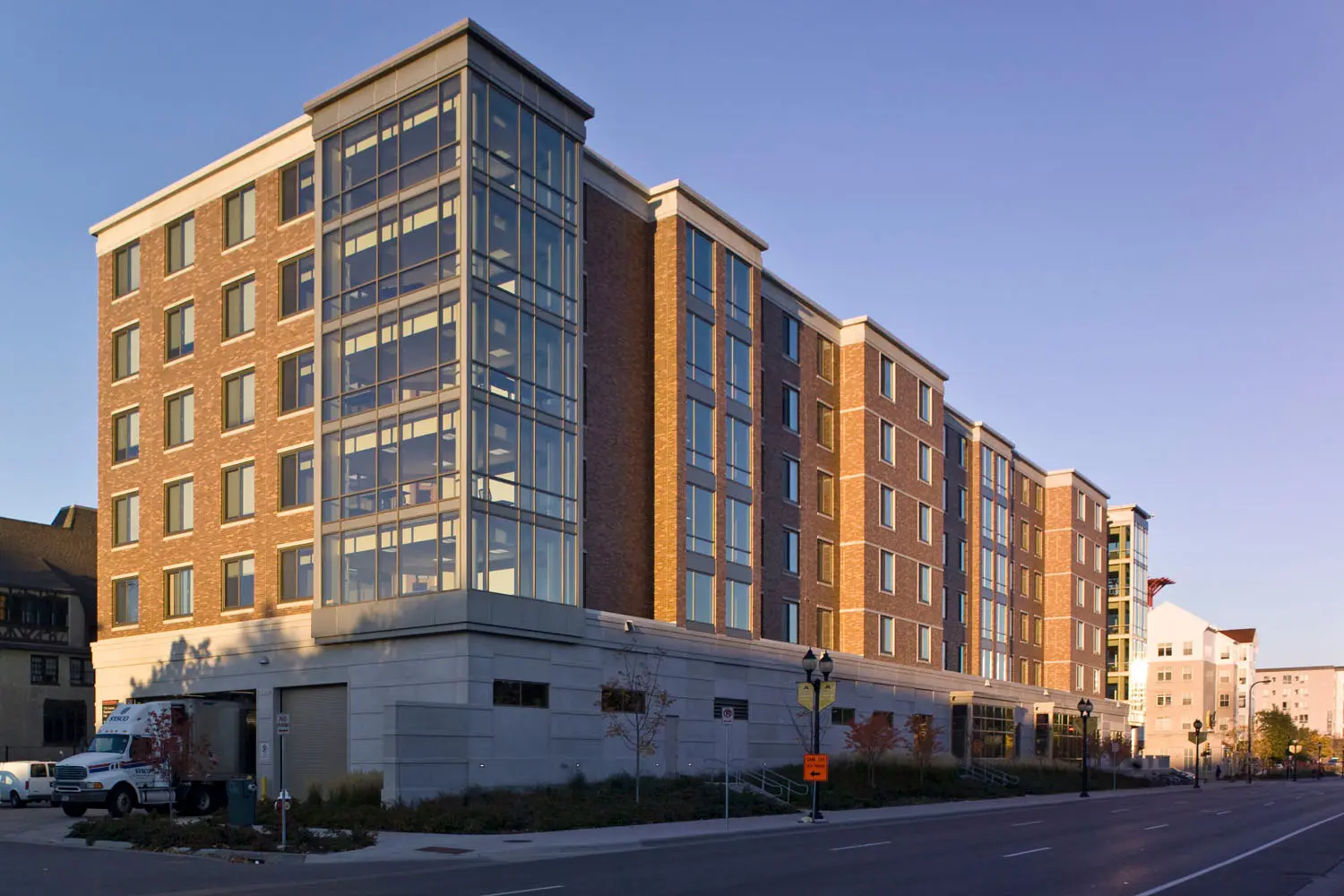The original basis of design for the six-story residential structure to be built at the University of Minnesota was a traditional “cavity-wall” construction comprising a concrete block interior with a handset brick exterior and architectural precast concrete window sills. Upon providing pricing for the window sills, Gage Brothers was informed that the project was “way over budget, the construction duration schedule won’t work with the current design and there is a very good chance it will NOT be built!”
Gage Brothers offered design assistance in converting the labor-intensive cavity wall construction to a solid precast wall with cast-in window sills and two different thin brick blends.
With these budgets, it was determined that the project would save over $800,000 as well as months on the overall schedule. Working closely with the contractor and design team, the switch was made to precast, and the bid documents were revised to precast. Also during additional design assistance, it was determined that an insulated precast panel would save extra dollars and time on the construction schedule.
The 17th Avenue Residence Hall has 600 beds, 290 double bedrooms, 5 single bed/private bath units, and 15 single bedroom Community Advisor units. Three Greek Chapter Houses, to support and enhance the sorority and fraternity student experience, are designed to be compatible with the historic designs of the adjacent fraternities. It includes sustainable design principles emphasizing energy efficiency, regional materials, and long-term viability. The Energy Star certified dormitory features floor-to-ceiling windows, a green roof, and a gray water system that captures and uses rainwater for function on site. These sustainable design principles are projected to save the University of Minnesota more than $570,000 in annual energy costs.

 605.336.1180
605.336.1180



